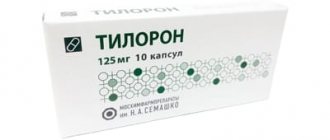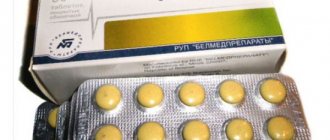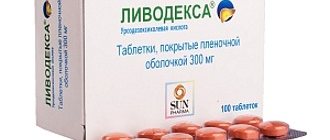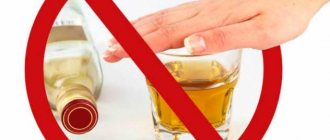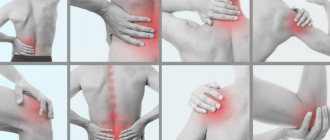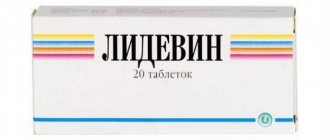January 5, 2021 Last revised: December 21, 2021 Medicinal products
Benzocaine is a powerful anesthetic substance that is intended to relieve pain. The anesthetic effect of this substance is local. Purified benzocaine has the appearance of odorless white crystals, but with a slight bitter aftertaste. If you apply this substance to the tongue or to the affected area of the skin, numbness will occur after 60 seconds, which will last about an hour (after an hour, you can take another standard dose of the substance to prolong the anesthesia for another hour, but do not overuse benzocaine).
Benzocaine is often available in the form of tablets of 300 milligrams of the active substance. You can also find the substance in the form of a spray and ointment. This medicine is used to relieve pain. Taking medication can help in the following cases:
- Pain in the stomach and intestines. Taking medication can significantly reduce pain.
- Pain in the ear area. Taking the medicine can significantly reduce pain and also eliminate burning and itching in the ear area.
- The medicine can be administered through the anus to relieve the symptoms of hemorrhoids and anal fissure.
- The medicine is also suitable during diagnostic procedures, when the introduction of instruments into the human body can damage the mucous membranes, which will cause pain.
- The drug has also found its use in dentistry. A solution of this drug can be used to anesthetize teeth and soft tissues; small doses of the drug can be injected directly into the hard gum tissue to prevent pain during treatment and tooth extraction.
- Very often, condoms are impregnated with a benzocaine solution as a lubricant.
The pharmacological action of the drug is based on the effect of reducing the permeability of cell membranes when benzocaine is applied to them. The cell membrane becomes impermeable to sodium ions, and calcium ions included in the cell are forced to the periphery of the cell membrane. In fact, this leads to the fact that the transmission of nerve impulses is either significantly reduced or disappears completely. Due to blocking the transmission of nerve impulses, information does not enter the cell, and the transmission of information from the cell also stops. Symptomatically, this looks like loss of sensation and numbness.
The effect begins to weaken after 40 minutes after using the drug - cell permeability to calcium and sodium ions is gradually restored, which leads to the resumption of transmission of nerve impulses. 1 hour after taking the drug, in 99% of experimental subjects, sensitivity is completely restored, in the rest it appears after another 1 hour.
Benzocaine is prescribed by a doctor; taking the medicine in large quantities can lead to side effects such as itching and burning; Sometimes skin inflammation occurs. If you take large doses of the medicine in tablet form, oxygen starvation may occur due to impaired transfer of oxygen from the lungs to the blood (methemoglobinemia).
There are few experiments showing the effect of the drug on a woman and her fetus during pregnancy. There is little data on the effects of the substance during breastfeeding (the American Medical Agency classifies it as Class C). However, you need to understand that often the totality of positive effects from taking a medicine exceeds the number of negative side effects. Therefore, doctors in some cases may prescribe medication for pregnant women.
Pharmacological properties
The use of the drug has a local anesthetic effect on the patient, which leads to the disappearance of pain during the period of action of the drug. When applied to the mucous membrane, it changes the behavior of the cell membrane - it reduces the permeability to sodium ions, and calcium ions are displaced from those receptors that are located on the inner side of the membrane. In fact, this leads to blocking the transmission of nerve impulses. Due to this property, it is widely used as a local anesthetic. When applied externally, the effect of the drug occurs almost immediately and lasts about 40 minutes. The drug has not been tested on animals or humans, so there is no data on mutagenicity and carcinogenicity. There is also no data on the effect of the drug on animal and human fertility.
Possible side effects and overdose
Benzocaine, as well as drugs containing it in their composition, practically do not cause side effects. These may occur when medications are used incorrectly or when used in patients who have contraindications to such therapy.
Often, the side effects of Benzocaine manifest themselves as minor allergic reactions in the form of:
development of contact dermatitis;- tingling on the skin;
- burning of the epidermis;
- skin itching;
- erythema;
- hives;
- rashes;
- swelling of the treated area of the skin or mucous membranes;
- persistent feeling of numbness in the area lubricated with the drug.
The use of the drug for the treatment of infants may lead to the development of methemoglobinemia in them. With systematic use of the drug in increased dosages, shortness of breath, attacks of dizziness, as well as the development of methemoglobinemia and cyanosis may occur. There is no specific antidote to eliminate these ailments.
Article on the topic: Which drugs are better, Losartan or Amlodipine, and can they be taken together?
To relieve the previously listed signs of overdose or side effects, you must stop taking or using the drug externally and consult your doctor for further instructions.
Release form
The main active ingredient can be sold either individually or in combination with other chemicals. Therefore, benzocaine is available in various forms. Main forms of release:
- Alcohol solution (for external use) - Menovazin.
- Sucking tablets - Hexoral Tabs, Stopangin 2A (Forte).
- In the form of a lozenge - Septolete Plus.
- Ointment (for external use) - Relief Advance, Proctosedyl; also part is included in the composition of heparin ointment.
- Capsules for rectal administration - Anestezol, Genferon and others.
- In tablet form - Bellastezin, Bellalgin, Anestezin.
Analogs
Since it is extremely difficult to find Benzocaine in its pure form (you can ask for an ointment or solution to be prepared in pharmacies that produce their own drugs), it is necessary to discuss in advance with your doctor the question of what medications can replace it. The most effective analogues of the product in question are:
Anestezin. The medicine is dispensed in the form of tablets for oral administration and 5% ointment for external use. Has a quick analgesic effect. The effect of cutaneous application or treatment of mucous membranes occurs within 1 minute and lasts about 20 minutes.- Dentisspray. The drug is widely used in dental practice. Avoid ingesting the components of the drug, since it is believed that it has an anorexigenic effect due to irritation of the mucous membranes of the gastrointestinal tract.
- Relief Advance. Benzocaine ointment intended for the treatment of hemorrhoids and anal fissures. The drug contains cocoa butter, due to which a softening effect is achieved on the inflamed mucous membranes of the anus.
Benzocaine analogues are selected taking into account the severity of the disease and the individual characteristics of the patient’s body.
Application
Depending on the type of medicine, there are three main methods of use:
- Inside - discomfort in the abdomen associated with possible damage to the stomach (gastralgia), inflammation of the mucous membrane of the esophagus, gallbladder disease, gastric and duodenal ulcers.
- Locally - to treat diseases of the middle ear and eliminate pain in the area of the auricle; for the treatment of skin diseases associated with rashes and itching (for example, urticaria); to relieve pain from hemorrhoids and anal fissure. Medicine can also be prescribed for painless diagnosis of diseases of the mucous membrane (gastroscopy, otoscopy, rectoscopy, urethroscopy). The medicine may also be prescribed when undergoing various gynecological procedures.
- As a local anesthetic.
- As a lubricant, the substance is often added to condoms.
The medicine should be used for the following purposes:
- Inside - to eliminate spasms and pain in the stomach and esophagus. They may also prescribe oral medication during peptic ulcers, gastralgia, increased sensitivity of the mucous membrane, esophagitis, and so on.
- Locally - to eliminate ear diseases (inflammation of the middle ear, pain in the ear canal, and so on). The medicine is often prescribed to eliminate pain and for skin diseases such as urticaria, skin lesions, damage to the mucous membranes, and so on. Medicine can also be prescribed for myositis.
ATTENTION!
The information on the page you are viewing is created for informational purposes only and does not in any way promote self-medication. The resource is intended to provide healthcare workers with additional information about certain medications, thereby increasing their level of professionalism. The use of the drug " Anestezin " requires consultation with a specialist, as well as his recommendations on the method of use and dosage of the medicine you have chosen.
Source: allmed.pro
Benzocaine during pregnancy and lactation
According to the post-Soviet classification, benzocaine was poorly tested during pregnancy. Doctors do not advise use during feeding, since the amount of benzocaine and its metabolites that can pass into milk has never been calculated. The medicine should be used only if necessary, if the number of positive effects outweighs the number of negative side effects.
According to the American government classification, the drug belongs to class C:
- There have been few or no good studies in animals and humans during pregnancy and breastfeeding.
- Although a negative effect on the fetus is possible, the drug can be used if necessary, since the number of beneficial effects outweighs the number of negative side effects.
Directions for use and dosage
The reception is strictly individual. A medical consultation is required before use. It is necessary to adhere to the dosage to avoid negative side effects. Typically the drug is used as follows:
- To treat pain using a five percent ointment, apply it to the affected area several times a day (usually this is done during the period of activation of the pain syndrome).
- To treat ear diseases using drops - about 5 drops in one ear several times a day.
- In the form of tablets for the treatment of gastrointestinal diseases - 0.3 grams of the substance 4 times a day, but not more than 5 tablets per day. The pediatric dose depends on age (usually 2 tablets of 0.3 grams).
- As an anesthetic in dentistry, benzocaine mixed with glycerin or oil is applied to the tooth or gum (the concentration of benzocaine should not exceed 20%). Powder or paste can be used to numb hard tooth tissues.
Instructions for use
Instructions for the use of Benzocaine for the treatment of the above diseases directly depend on the form of release of the drug:
External use of the drug Benzocaine involves applying 5% ointment, solution or powder to the affected part of the skin 2-3 times a day. If necessary, a non-sterile bandage is applied over the applied medication (if there are no wounds or other damage to the skin). The course of treatment is determined for each patient individually.- Internal use. The standard oral dosage of benzocaine for adults is 0.3 g four times daily. It can be adjusted by the attending physician to achieve a more pronounced effect of therapy.
For children, the dose of the drug for systemic use is calculated depending on age, course of the disease and body weight. The duration of therapy is also determined individually.
Note. The combination of Benzocaine with drugs that suppress the production of cholinesterase, as well as with analgesics that have an antipyretic effect, leads to an increase in the therapeutic properties of the former.
In dentistry
Typically, dentists use a 5-20% oil solution of Benzocaine for pain relief when performing various interventions on the gum mucosa. If we are talking about hard dental tissues, then to reduce the intensity of pain in this case, a special paste based on benzocaine (50-70%) is used, which is lubricated on the aching tooth.
In otolaryngology
When treating inflammatory diseases of the ear, 4-5 drops of the solution are instilled into the external auditory canal of the diseased organ. After this, tamponing is carried out using cotton cloth. The number of manipulations depends on the course of the pathology. If necessary, the procedure can be performed every 1.5-2 hours.
Ear infection
The duration of treatment is from 5 to 7 days. If therapy is ineffective, benzocaine can be replaced with another drug. Also, the course of treatment can be prolonged by the attending physician if the patient has already shown the first signs of positive dynamics from the procedures.
For hemorrhoids
For this disease, suppositories or an oil solution of Benzocaine are mainly used. Suppositories are administered rectally, dosage is from 0.05 to 0.1 g. For local anesthesia, a 5-20% oil solution is applied.
Contraindications
The drug is contraindicated:
- There is hypersensitivity to benzocaine and to certain components of medications containing benzocaine.
- Patients under two years of age are prohibited from using this medicine.
During pregnancy and breastfeeding, it is advisable to avoid using the drug, since there is little experimental data on the effect of this substance on the fetus. However, benzocaine can be used if the number of positive therapeutic effects outweighs the number of negative side effects.
Indications and contraindications
Systemic (oral) use of benzocaine is indicated for:
- stomach pain of various etiologies;
- esophagitis;
- stomach and duodenal ulcers.
Esophagitis
For local anesthesia, ointments, solutions and aerosols based on benzocaine are prescribed to patients with:
- acute (purulent) otitis media;
- pain in the external auditory canal;
- nettle rashes on the skin;
- dermatological pathologies of infectious and non-infectious origin, accompanied by itching, burning, swelling of the skin;
- perianal fissures;
- varicose anal veins (hemorrhoids).
Article on the topic: Which drug is better Normodipine or Amlodipine and what is the difference between them?
As already noted, benzocaine is also used for diagnostic procedures. So, its use is advisable when:
- otoscopy;
- gastroscopy;
- rectoscopy;
- urethroscopy;
- various gynecological studies.
In dental practice, medications containing this substance are used for superficial anesthesia during various types of interventions. The main contraindication to the use of Benzocaine is the patient's individual intolerance to this substance. There are also restrictions on the use of the medicine to treat children. Thus, Benzocaine is allowed to be used only for children over two years of age.
It is not recommended to use the medicine during gestation. If such a need arises, treatment should be prescribed only by a doctor and carried out under his close supervision. There is no data regarding the possibility of using Benzocaine during lactation. Since it is unknown whether the substance passes into breast milk, breastfeeding should be discontinued during therapy.

